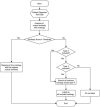Conversion of Automated 12-Lead Electrocardiogram Interpretations to OMOP CDM Vocabulary
- PMID: 36130711
- PMCID: PMC9492322
- DOI: 10.1055/s-0042-1756427
Conversion of Automated 12-Lead Electrocardiogram Interpretations to OMOP CDM Vocabulary
Abstract
Background: A computerized 12-lead electrocardiogram (ECG) can automatically generate diagnostic statements, which are helpful for clinical purposes. Standardization is required for big data analysis when using ECG data generated by different interpretation algorithms. The common data model (CDM) is a standard schema designed to overcome heterogeneity between medical data. Diagnostic statements usually contain multiple CDM concepts and also include non-essential noise information, which should be removed during CDM conversion. Existing CDM conversion tools have several limitations, such as the requirement for manual validation, inability to extract multiple CDM concepts, and inadequate noise removal.
Objectives: We aim to develop a fully automated text data conversion algorithm that overcomes limitations of existing tools and manual conversion.
Methods: We used interpretations printed by 12-lead resting ECG tests from three different vendors: GE Medical Systems, Philips Medical Systems, and Nihon Kohden. For automatic mapping, we first constructed an ontology-lexicon of ECG interpretations. After clinical coding, an optimized tool for converting ECG interpretation to CDM terminology is developed using term-based text processing.
Results: Using the ontology-lexicon, the cosine similarity-based algorithm and rule-based hierarchical algorithm showed comparable conversion accuracy (97.8 and 99.6%, respectively), while an integrated algorithm based on a heuristic approach, ECG2CDM, demonstrated superior performance (99.9%) for datasets from three major vendors.
Conclusion: We developed a user-friendly software that runs the ECG2CDM algorithm that is easy to use even if the user is not familiar with CDM or medical terminology. We propose that automated algorithms can be helpful for further big data analysis with an integrated and standardized ECG dataset.
The Author(s). This is an open access article published by Thieme under the terms of the Creative Commons Attribution-NonDerivative-NonCommercial License, permitting copying and reproduction so long as the original work is given appropriate credit. Contents may not be used for commercial purposes, or adapted, remixed, transformed or built upon. (https://creativecommons.org/licenses/by-nc-nd/4.0/).
Conflict of interest statement
None declared.
Figures





References
-
- Garcia T B. Jones & Bartlett Publishers; 2013. 12-Lead ECG: The Art of Interpretation.
-
- Smulyan H. The computerized ECG: friend and foe. Am J Med. 2019;132(02):153–160. - PubMed
-
- Willems J L, Abreu-Lima C, Arnaud P. The diagnostic performance of computer programs for the interpretation of electrocardiograms. N Engl J Med. 1991;325(25):1767–1773. - PubMed
-
- American Heart Association Electrocardiography and Arrhythmias Committee, Council on Clinical Cardiology; American College of Cardiology Foundation; Heart Rhythm Society . Kligfield P, Gettes L S, Bailey J J. Recommendations for the standardization and interpretation of the electrocardiogram: part I: the electrocardiogram and its technology a scientific statement from the American Heart Association Electrocardiography and Arrhythmias Committee, Council on Clinical Cardiology; the American College of Cardiology Foundation; and the Heart Rhythm Society endorsed by the International Society for Computerized Electrocardiology. J Am Coll Cardiol. 2007;49(10):1109–1127. - PubMed
-
- Reich C, Ryan P B, Stang P E, Rocca M. Evaluation of alternative standardized terminologies for medical conditions within a network of observational healthcare databases. J Biomed Inform. 2012;45(04):689–696. - PubMed
Publication types
MeSH terms
LinkOut - more resources
Full Text Sources
Miscellaneous

